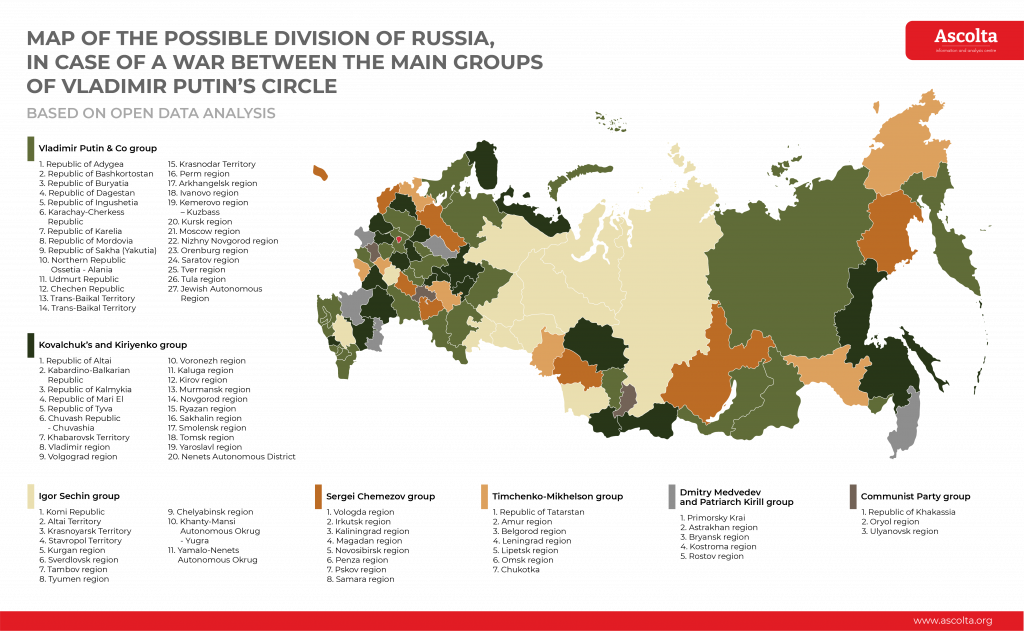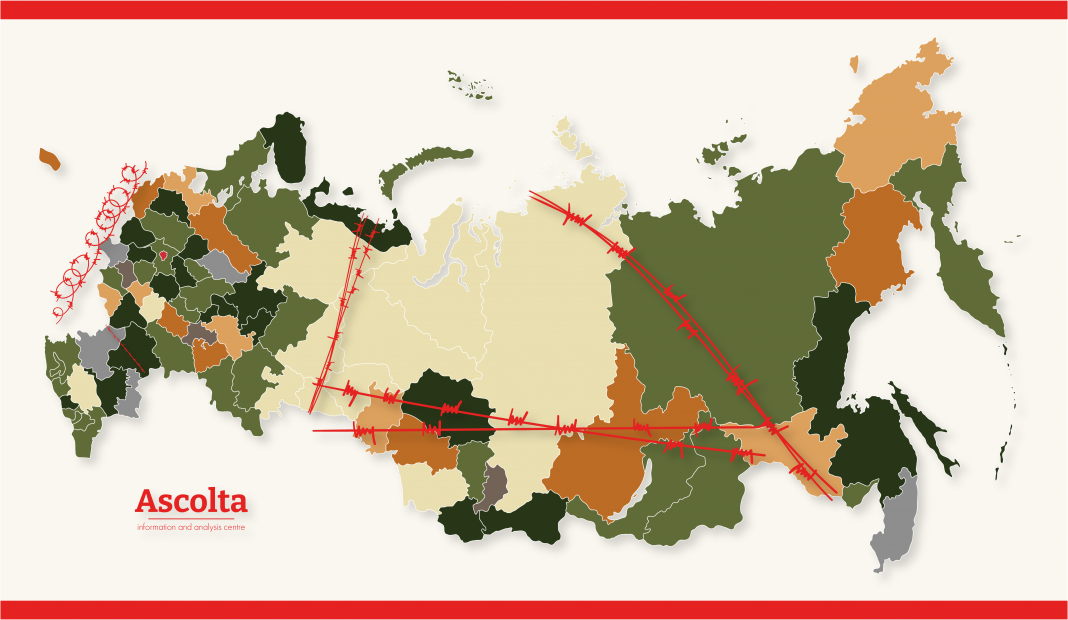Studying the domestic policy of the Russian Federation, most scientists and analysts agree that Russian society remains class-based. In its own traditions and customs, it has been oriented towards Asia for centuries, forming fundamental differences between the average European and the same Russian.
Perhaps the main feature of the Russian class has always been a clear hierarchy of power, where the boyars (nobility) have absolute control over the serfs, and the rigidity of his rule measures respect for the conditional tsar. Otherwise, the same tsar is considered weak and unworthy to be at the head of the entire system and is automatically subject to overthrow or replacement.
This Content Is Only For Subscribers
The current system of the Russian government is a clan system, where the conditional “Kremlin towers” (that is, the nobility) completely control all social, humanitarian, political and economic processes in the country. At the same time, the nobility’s activity is built around the president (that is, the tsar) and has a critical dependence on him. But at the same time, the stability of the tsar is entirely dependent on the boyars and the isualiz distribution of power between them, which creates a vicious circle of mutually beneficial relations called the internal political system of Russia.
Recently, a map of Russia isualizing the possible collapse of the Russian Federation into many separate states or autonomous units, which allegedly could happen in case of the collapse of Putin’s system of management, has been circulating on the Internet. It is noteworthy that the proponents of this theory carry out such a section along ethnic lines while levelling all other factors that play an equally important role at the regional level (positions of ethnic and religious groups, production chains, territorial features, the level of development of the region, relations with neighbouring regions and much more).
According to Ascolta analysts, if such a forecast comes true, the more important factor will be not the ethnic peculiarity of a particular territory but the direct stability and authority of the regional authorities and their verticals. With such an approach, it is more important to pay attention to the current system of relationships and orientation (or dependence) of the heads of regions on certain towers of the Kremlin.
In this material, Ascolta studies the main influence groups in the Russian regions. Analysing open data, we establish links between the heads of regions and their patrons in Moscow and determine possible trends in the strengthening or weakening of certain clans at the regional level.
It is important to note that the Putin system is built so that there is a managerial layer between the Center and the regions in the form of the institution of Presidential Plenipotentiaries in the Federal Districts. There are eight federal districts themselves. Putin appoints the most trusted “governors” to the leadership of the district, who act as “supervisors” of the activities of the governors – this institution is essential for more effective management of such a cumbersome machine as the Russian Federation – especially in the context of the fragmentation of interests promoted by the governors, as well as in the strength of the problems that arise at the level of regional elites. “Deputies” in the form of plenipotentiaries are a tool with which Moscow does not allow the development of separatist, irredentist, clan and other relations in most regions.
The vast majority of governors are proteges of significant players who receive certain territories “for feeding” (which is typical for a class society). To date, the heads of the subjects of the Federation in Russia are divided into the following groups of influence (some regions are in double or even triple management – for example, a group of large entrepreneurs agrees on the delimitation of economic and political interests, yielding politics to Sergei Kiriyenko or Andrey Turchak and leaving behind the impact on the business environment):
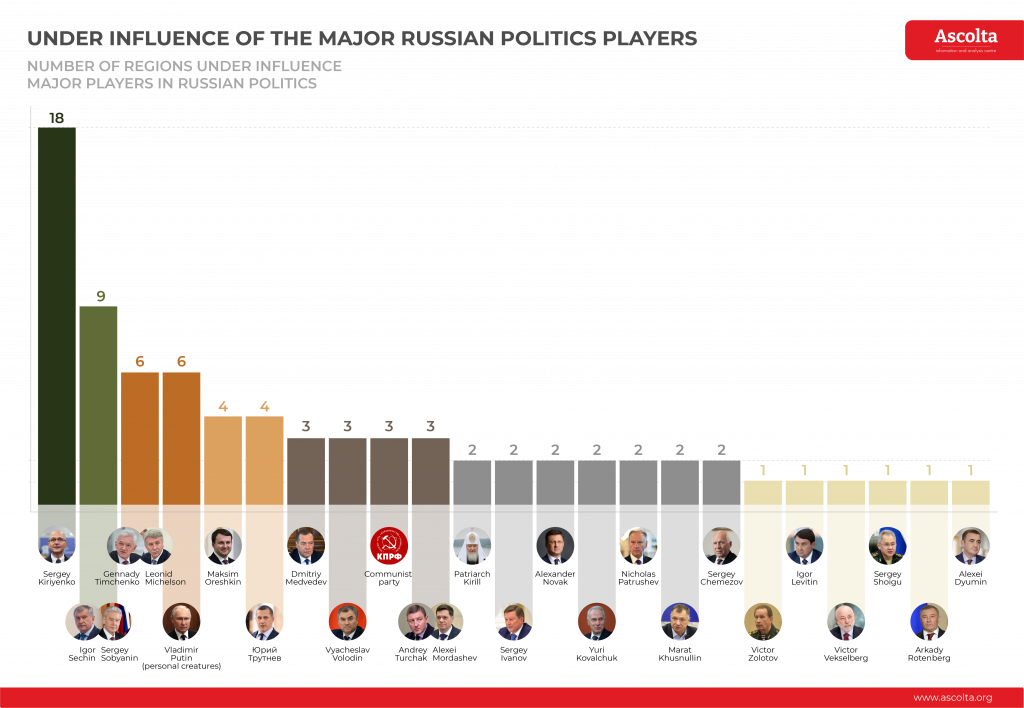
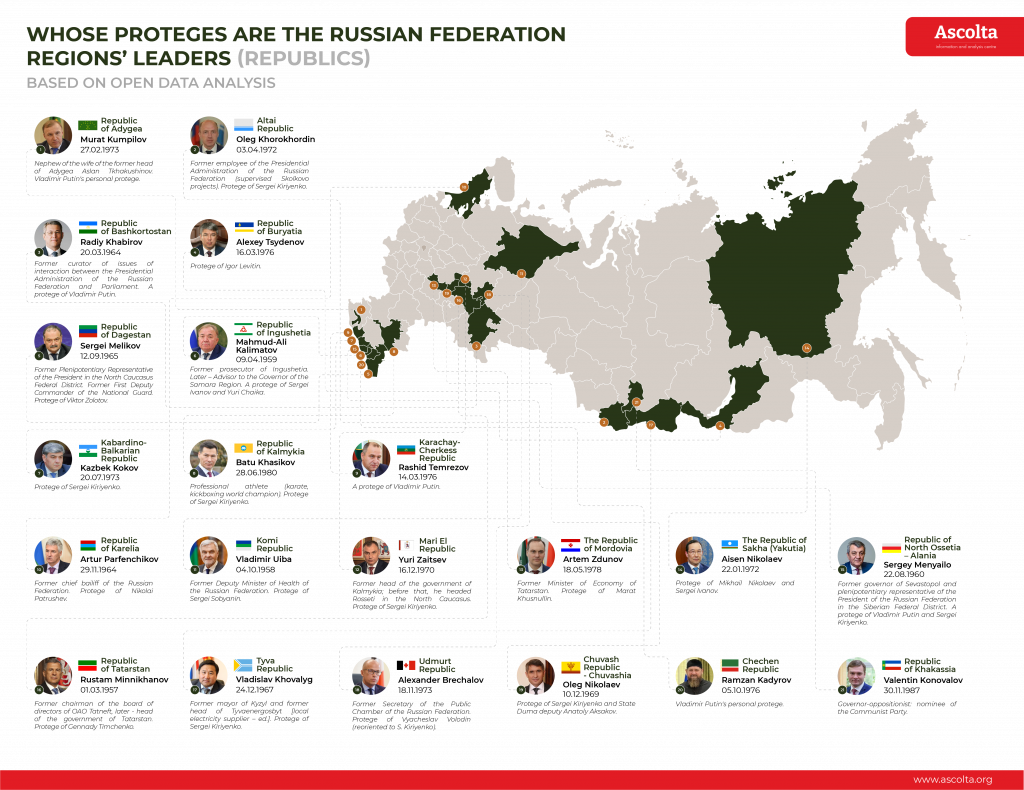
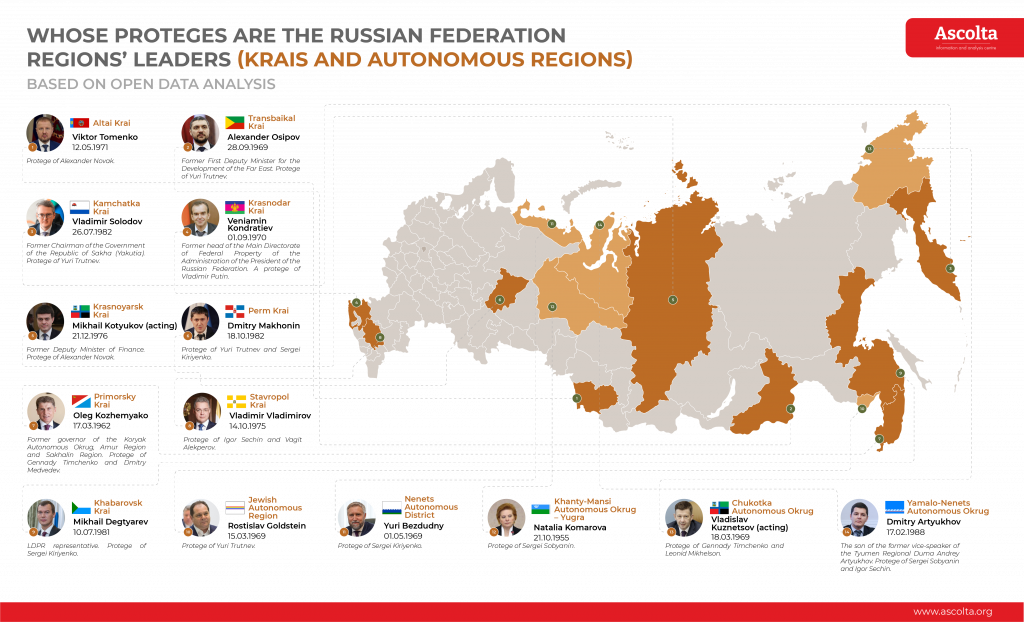
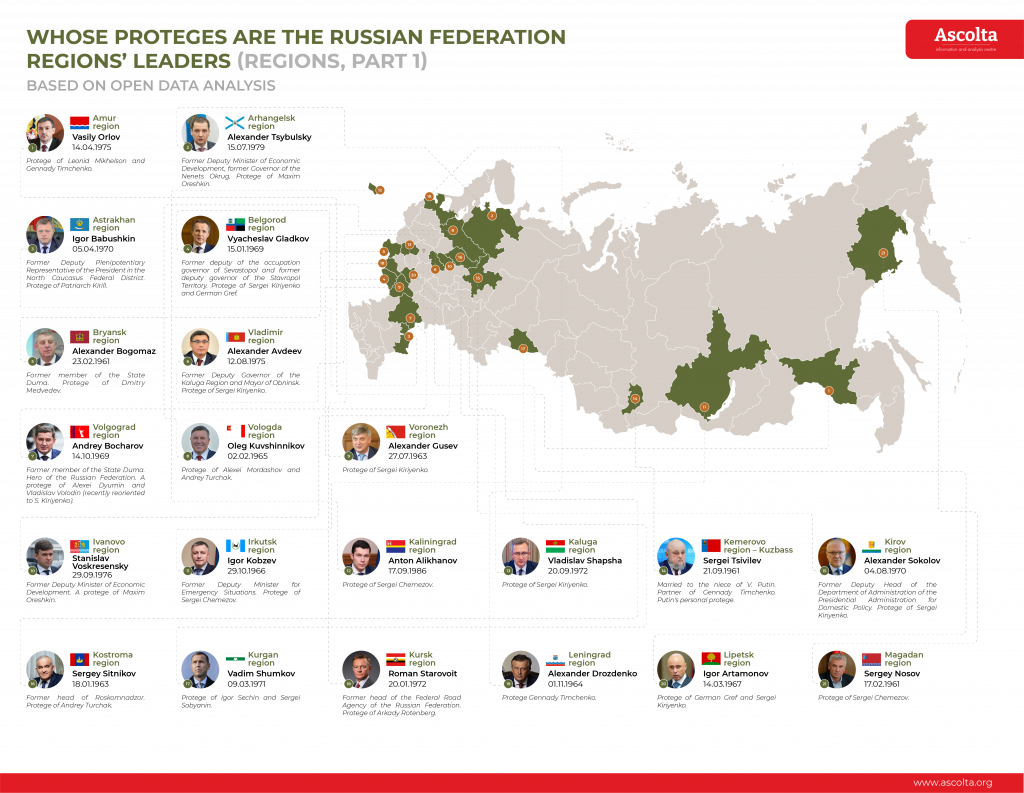
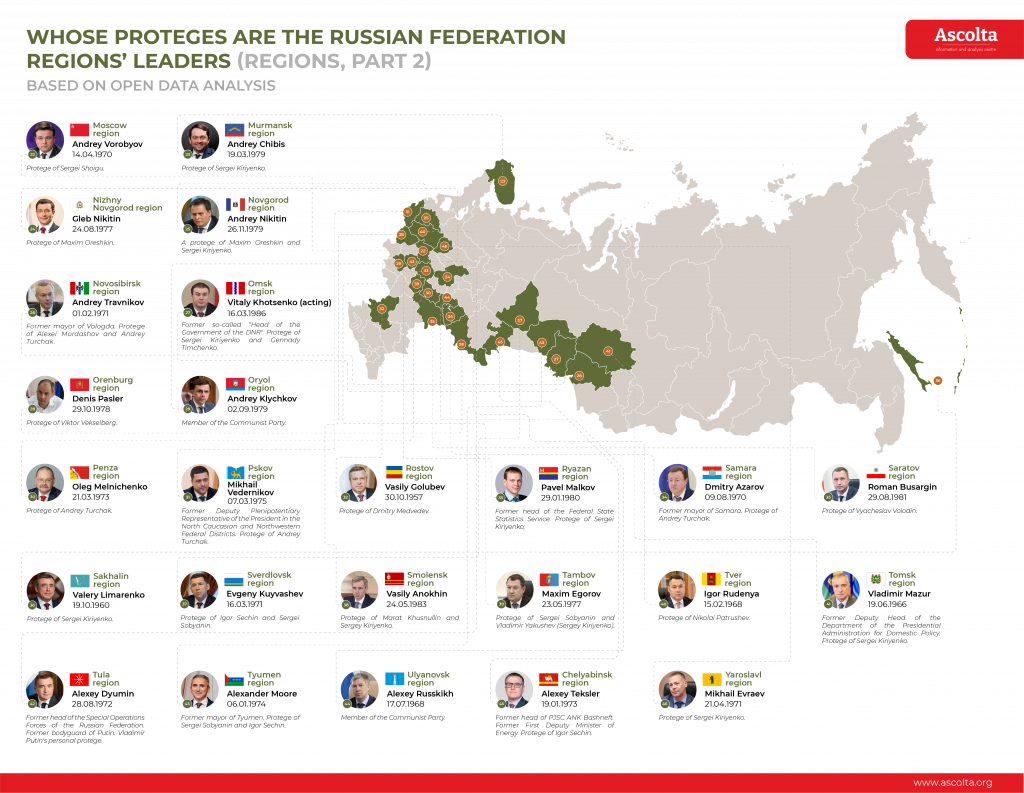
Currently, there are seven main groups of influence on the Russian regions that exercise informal control over the local vertical of power:
- Vladimir Putin & Co (28)
Despite the consistent formation and further strengthening of his own environment (the conditional Kremlin towers), which, among other things, is responsible for regional policy, Vladimir Putin maintains his active participation in this direction. First of all, we are talking about the appointment of the heads of regions according to their preference (for example, family or friendly ties, personal contacts, etc.) or on the advice/request of friends and comrades who are not members of the near-Kremlin public clans (Nikolai Patrushev, Igor Levitin, Sergei Ivanov, Yuri Chaika, Marat Kabaev, Victor Zolotov, Viacheslav Volodin, Maxim Oreshkin, Alexei Dyumin, Arkady and Boris Rotenberg, Viсtor Vekselberg and others).
This group is the leader in terms of the number of controlled regions. According to Ascolta analysts, the group’s representatives currently head 28 Russian regions.
- Group of Kovalchuks (20)
Regarding the number of governors controlled, the second group focuses on Yuri and Mikhail Kovalchuk. This group also includes Sergei Kiriyenko, the First Deputy Head of the Presidential Administration, who is close to the Kovalchuks. Notably, Kiriyenko himself has the most significant political influence on regional leaders in 18 regions.
Apparently, based on the results of the upcoming elections, which will be held on September 11, it is possible to predict the strengthening of the positions of both Kiriyenko himself and the Kovalchuk group as a whole.
- Group of Igor Sechin (11)
The group of Igor Sechin also had a rather serious influence on the Russian regions. It also includes Moscow Mayor Sergei Sobyanin and Deputy Prime Minister of the Russian Federation Alexander Novak. In total, at present, this group controls the leadership of 11 regions. Its main feature is the emphasis on energy resources, which is clearly seen in the geography of interests and the spread of influence.
- Chemezov group (6)
Another member of Putin’s inner circle, Sergei Chemezov, is forming his influence group at the regional level. This group sometimes creates competition for local elites controlled by the Kovalchuk group. Also, the Chemezov group includes the interests of Defense Minister Sergei Shoigu, First Deputy Chairman of the Federation Council Andrey Turchak and his close partner, oligarch Alexei Mordashev. Together, this group controls six Russian regions.
- Timchenko-Mikhelson group (6)
The authorities of six more Russian regions are controlled by a fictitious group headed by Russian oligarchs Gennady Timchenko and Leonid Mikhelson. In several regions, the Timchenko-Mikhelson group competes with the Igor Sechin group, which is caused by the interest of both groups in energy production and processing facilities.
According to Ascolta analysts, such interweaving of interests of different groups can pose a significant threat to the emergence or intensification of existing conflicts at the regional level.
- Group of Medvedev and Patriarch Kirill (5)
Also, Dmitry Medvedev is building influence at the regional level. His close relationship with the Russian Orthodox Church allows him to join forces in this direction with Patriarch Kirill. The influence of the Medvedev and Kirill group is clearly visible in five regions of the Russian Federation.
- Communist Party of the Russian Federation (3)
An independent factor in domestic policy in Russia is the activity of the Communist Party of the Russian Federation and the strengthening of its position in certain regions of the country. We can talk about three regions where the communists are in power. At the same time, their number may increase in the upcoming elections.
Representatives of this group largely consolidated their actions with the group of Vladimir Putin. At the same time, they have their own opinion on several issues and are trying to build favourable positions for themselves.
Also, this group has more tense relations with representatives of other groups, most of which are oriented towards big business. In this case, we can also talk about the potential threat of forming conflicts at the regional level.
An important point: It is the class component, the presence of confrontations and contradictions among elite groups, and not ethnic or territorial principles, that can lead to conflict between regions in the future. That is, Russia is threatened not so much by a conditional “rebellion of Siberia” or “Tatar separatism” as by mini-wars between the “Kirienko” and “Turchakov”, “Patrushev” and “Sechin’s”, etc. Medieval principles based on the class principle can be revived in modern Russia more efficiently than ethnic principles.
